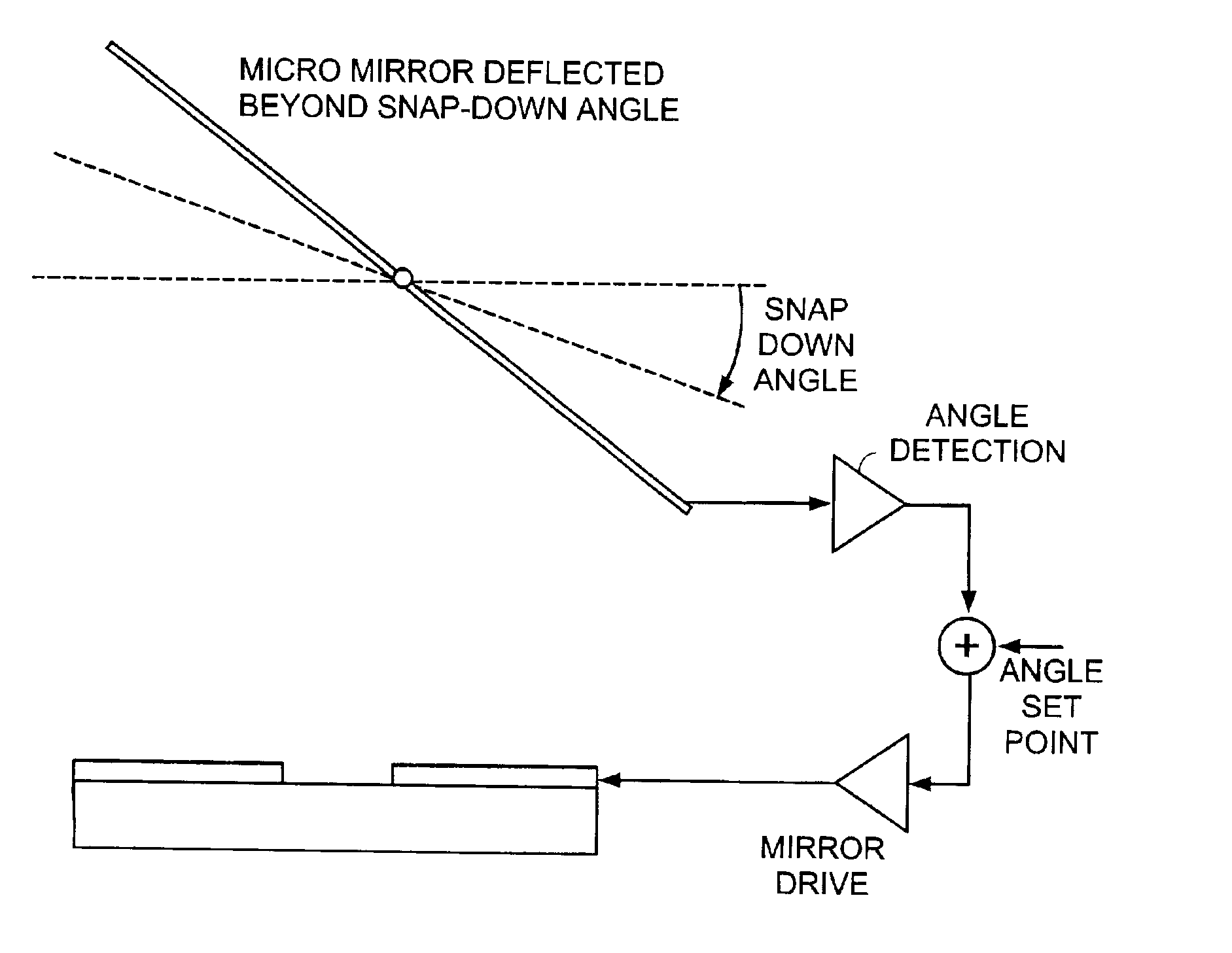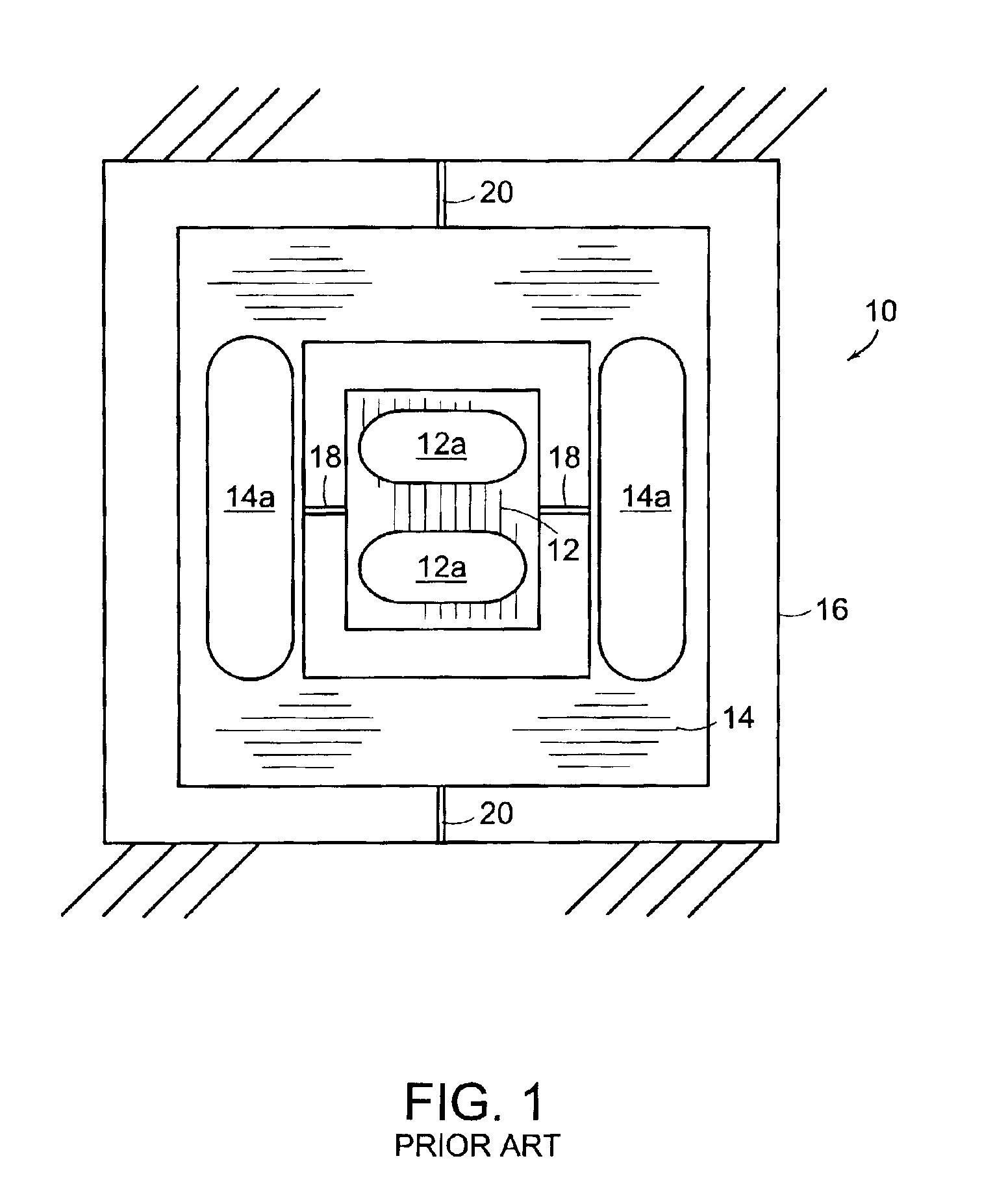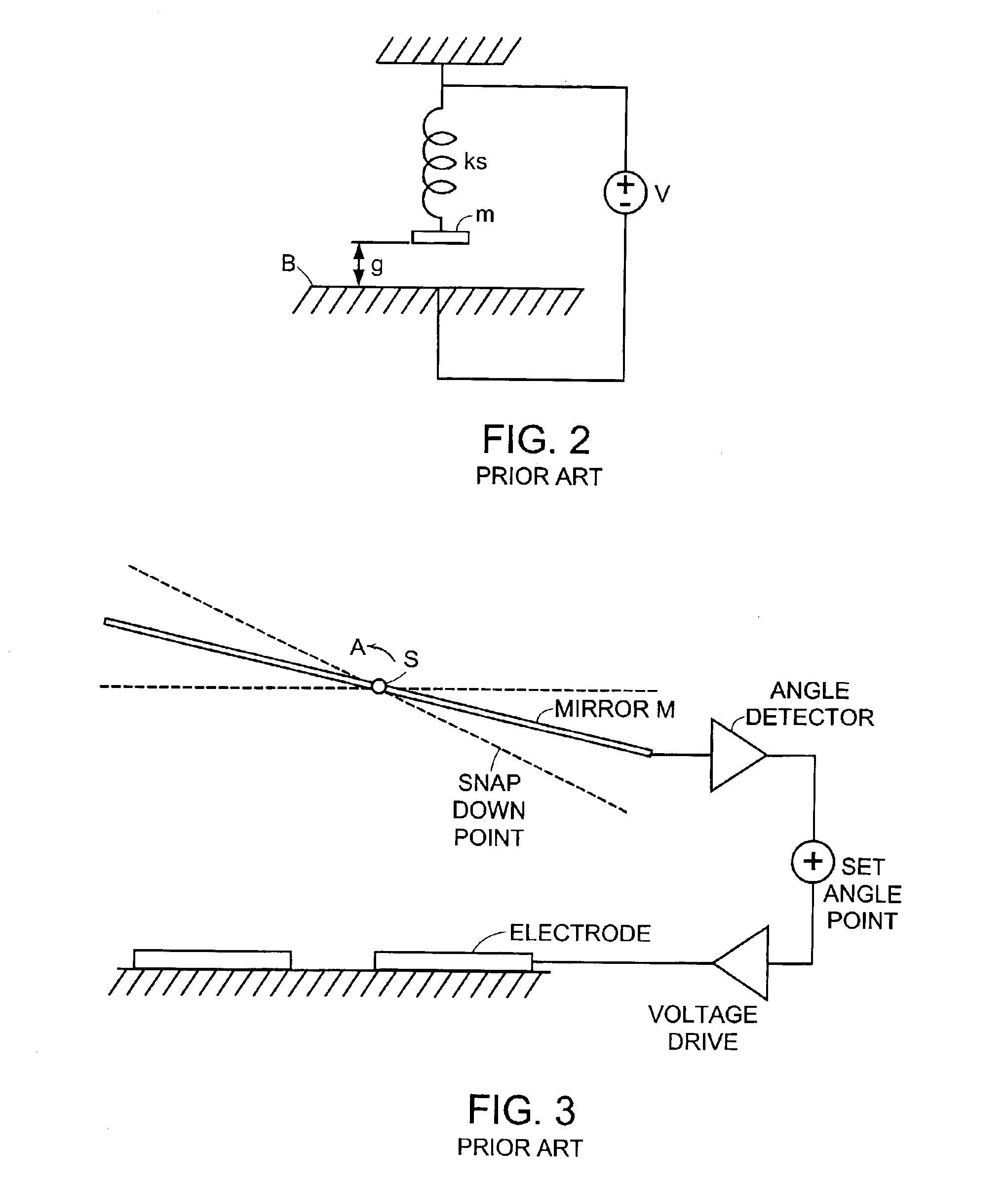Pointing angle control of electrostatic micro mirrors with modified sliding mode control algorithm for precision control
a micro-mirror and sliding mode technology, applied in the field of micro-electromechanical devices, can solve the problems of affecting the overall performance of the device, requiring additional connections between the substrate and the control system, and temperature sensitive piezoresistive angle sensors, etc., to achieve the effect of reducing steady state output error, reducing output noise, and improving setpoint tracking performan
- Summary
- Abstract
- Description
- Claims
- Application Information
AI Technical Summary
Benefits of technology
Problems solved by technology
Method used
Image
Examples
Embodiment Construction
[0036]The present invention provides capacitors for position detection of a MEMS micro mirror and uses a control system, such as sliding mode control, which provides a fast non linear feedback loop to control the position of the mirror. Throughout the specification the MEMS device is referred to as a micro mirror. While this is one suitable application of the technology, one skilled in the art will recognize that the invention can be used in other MEMS devices.
[0037]The specification is divided into three parts. First, the term “snap down point” is introduced as a description of a design parameter that is important in MEMS devices. In the context of the MEMS mirrors, the snap down point limits the deflection of the mirror. Second, the use of closed loop feedback control in MEMS mirrors is discussed. Third, the use of capacitors for position detection is discussed in the context of micro mirrors. Finally, the non linear control feedback loop is introduced by the use of sliding mode c...
PUM
| Property | Measurement | Unit |
|---|---|---|
| capacitance | aaaaa | aaaaa |
| capacitance | aaaaa | aaaaa |
| capacitance | aaaaa | aaaaa |
Abstract
Description
Claims
Application Information
 Login to View More
Login to View More - R&D
- Intellectual Property
- Life Sciences
- Materials
- Tech Scout
- Unparalleled Data Quality
- Higher Quality Content
- 60% Fewer Hallucinations
Browse by: Latest US Patents, China's latest patents, Technical Efficacy Thesaurus, Application Domain, Technology Topic, Popular Technical Reports.
© 2025 PatSnap. All rights reserved.Legal|Privacy policy|Modern Slavery Act Transparency Statement|Sitemap|About US| Contact US: help@patsnap.com



